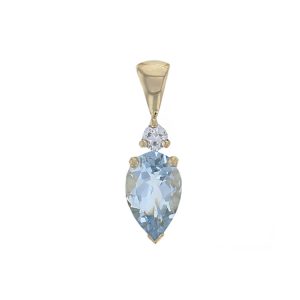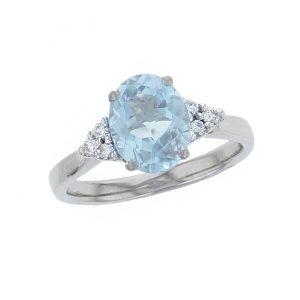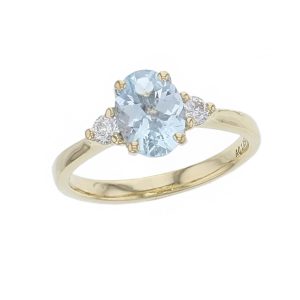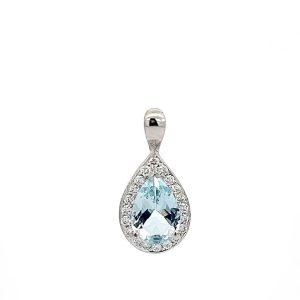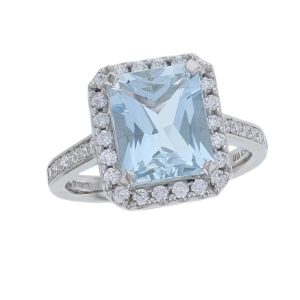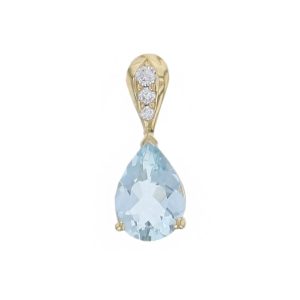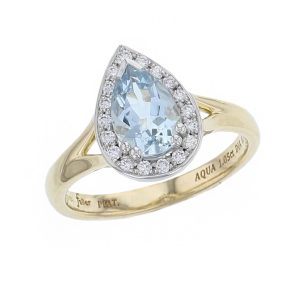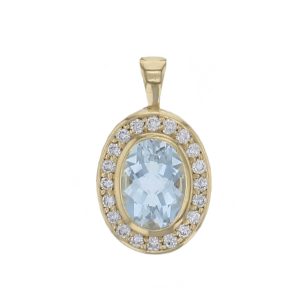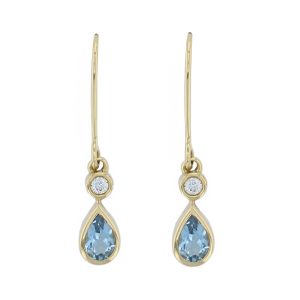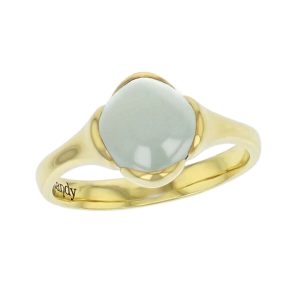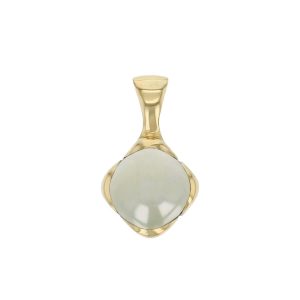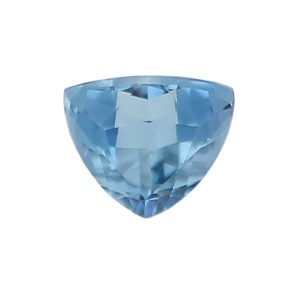-
Physical Characteristics
Aquamarine has a MOHS of 7.5 – 8 out of a scale of 10.
COLOUR
Aquamarine owes its colouring to trace amounts of ferrous iron. Its colour can range from blue-green to deep blue and can vary from very light to moderately dark, though you rarely see aquamarine darker than a Swiss blue topaz. Santa Maria Aquamarine describes those with a deeper shade of blue than normal. The name is derived from the Santa Maria de Itabira gem mines of Brazil, where deep and vibrant aquamarines have been found.
Aquamarine is dichroic – showing near colourless and stronger blue in different crystal directions.
CLARITY
Aquamarine has excellent transparency and brilliance. Like morganite, faceted aquamarine usually does not have inclusions that are visible to the eye. Less-transparent material is often cut as cabochons. When cut and polished, morganite has an attractive vitreous (glass like) to waxy luster.
CUT
Aquamarine is usually faceted to display its brilliance. It is available in a variety of shapes and cutting styles. Traditional shapes are most common, including emerald cuts, ovals, pears, rounds and cushions, and fancy shapes are also readily available, such as trillions, hearts and briolettes.
Aquamarines are available in large sizes and value is decided by clarity, depth of colour, and to a lesser extent the purity of colour. Since aquamarine is available in large sizes, there is usually no incremental price increase for large crystals. All beryls hold the same value above about three carats. (Red beryl is an exception).
-
Spiritual & Health Benefits
In ancient lore, Aquamarine was believed to be the treasure of mermaids, and was used by sailors as a talisman of good luck, fearlessness and protection. It was also considered a stone of eternal youth and happiness.
Aquamarine is calming, soothing, and cleansing, and inspires truth, trust and letting go.
-
Care
Precious beryl is sensitive to pressure and vulnerable to household chemicals. Beryl is one of the more durable gemstone types, but it does still require some careful handling. Avoid wearing beryl jewelry when working with harsh chemicals or household cleaners, such as bleach or acid. When cleaning beryl gemstones, warm soapy water and tissue or a soft cloth can be used. Be sure to rinse the stones well to remove all soapy residue. It is best to avoid the use of ultrasonic cleaners.
Remove precious beryl jewelry when exercising, cleaning, playing sports or engaging in vigorous physical activities. Beryl can easily scratch other gems, such as quartz, so avoid direct contact with other gem types. To prevent scratches, store beryl separately and away from gemstones and gemstone jewelry, such as topaz, sapphire and diamond. You can store your gemstones or gemstone jewelry by wrapping them in soft cloth and placing them into a fabric-lined box.
-
Other Blue Gems
Other blue gems include sapphire, spinel, tanzanite, and tourmaline.
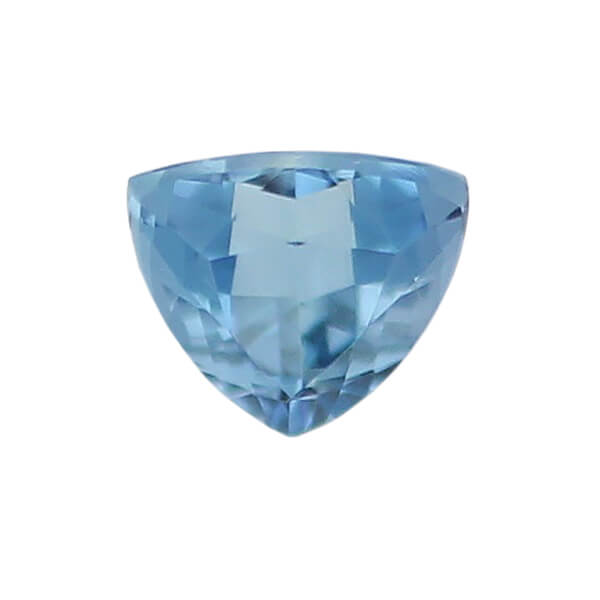
Aquamarine
Aquamarine is the birthstone for March and the gem for zodiac sign Pisces and the gemstone for the 18th or 19th wedding anniversary.
Aquamarine, the Latin for seawater is the name given to this light greenish-blue gem from the beryl family. Other types of beryl are emerald, morganite, golden beryl and heliodor, and the rarest – red beryl. Beryls can range from colourless to black, and crystals can range in size from single carats to extremely large and flawless examples displayed in museums. Transparent crystals are referred to as ‘precious beryl’.
The 1,298.00ct Roosevelt Aquamarine is one of the most famous aquamarines.



